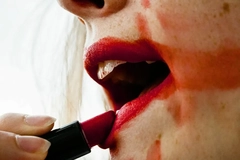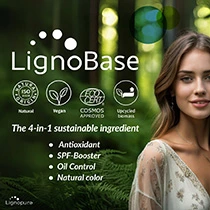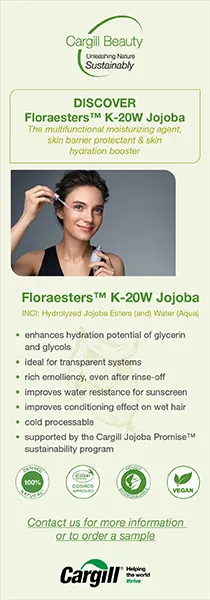Beauty in the byproduct: Upcycled ingredients power sustainable cosmetics

Upcycled ingredients are becoming increasingly visible in personal care as the industry explores new ways to reduce waste and promote circularity. By transforming byproducts from food, fragrance, agricultural, and industrial processes into functional cosmetic ingredients, manufacturers are responding to mounting sustainability expectations without compromising performance.
“Upcycled ingredients hold immense value in today’s personal care formulation landscape. They embody a commitment to sustainability, environmental protection, and ethics by transforming waste and byproduct materials into high-quality cosmetic ingredients,” Giada Maramaldi, global category manager of Botanical Actives at Givaudan Active Beauty, tells Personal Care Insights.
“As waste reduction becomes more evident in day-to-day lives, more global consumers will scrutinize their beauty routines and favour products that contribute to sustainability.”
Innova Market Insights data suggests that product launches in the personal care sector featuring upcycled ingredients soared by 196% between April 2020 and March 2025. Half of global consumers said they actively seek out upcycled ingredients when shopping for beauty and personal care products, signaling a growing demand for sustainability-driven innovation.
Maramaldi adds that consumers see upcycling “as a premium version of recycling.”
Trash is treasure
Waste materials long considered unusable are being re-evaluated for their cosmetic potential.
These byproducts are typically discarded after their primary function has been met, such as in the food industry, often overlooking the rich compounds left behind.
Givaudan’s upcycled actives are sourced from ingredients that would otherwise go to waste. These include crocus flowers left over from saffron production, bilberry seeds discarded after flavonoid extraction, and spent leaves and roots from the fragrance industry.
Maramaldi explains that the waste products Givaudan upcycles contain valuable compounds for personal care formulations.
One ingredient is sourced from the byproducts of crocus flowers used to produce saffron. “Once the pistils for saffron have been gently removed, the crocus flowers are upcycled to DandErase, which contains both potent and very rare molecules like kinsenoside,” she explains. DandErase helps soothe irritated scalps by balancing the microbiome and reducing dandruff.
Similarly, a recent study found that the leftover biomass from essential oil extraction contains rich concentrations of bioactive compounds, including polyphenols, flavonoids, essential nutrients, and polysaccharides, that can serve as true active ingredients in cosmetic formulations.
“Over 90% of the plant biomass remains as residual solid or aqueous waste after distillation,” Dr. Ez-zouhra El Maaiden, R&D project lead for the study, told us.
.jpg) Once the pistils for saffron have been gently removed, the crocus flowers are upcycled to DandErase.“This biomass is often discarded, composted, or underutilized, despite containing valuable polyphenols and terpenes.”
Once the pistils for saffron have been gently removed, the crocus flowers are upcycled to DandErase.“This biomass is often discarded, composted, or underutilized, despite containing valuable polyphenols and terpenes.”
“Rosemary extracts particularly contain high total phenolic content. They are known for their antioxidant properties and potential to neutralize harmful radicals in the body,” El Maaiden added.
Functional benefits for performance
Upcycled ingredients can serve multiple roles in formulations, ranging from emollients and exfoliants to antioxidants and biosurfactants.
Estonian biotech company Äio aims to replace fossil-derived and environmentally demanding plant-derived oils with eco-conscious and circular alternatives.
“At the heart of our technology is the ability to convert low-value industrial side streams into high-value specialty lipids,” Magdalena Koziol, head of cosmetics development at Äio, told us recently.
The company uses a red yeast microbe “in a process similar to brewing beer” to convert waste biomass into sustainable fat alternatives for cosmetics. Äio’s oil alternatives are suitable for use in emulsions, waterless formulations, cleansing products, and color cosmetics.
At Kensing, a partnership with Belgium-based biotech firm AmphiStar uses upcycling to develop biosurfactants derived from cooking oil and waste sugar.
“This upcycling of waste into higher-value biosurfactants ensures a manufacturing process free of fossil feedstocks, like olefins, or resource-intensive crops, like palm,” Denis Bendejacq, senior VP of global research and innovation at Kensing, said.
AmphiStar’s co-founder, Sophie Roelants, added that their biosurfactant platform can be tailored to specific needs: “Our synthetic biology technology enables us to produce many different molecules and tailor them precisely to different applications — varying properties such as levels of surface tension, solubility, antimicrobial activity, and mildness on the skin.”
Multiple formulation applications
Upcycled ingredients are being incorporated into a wide range of products across categories, from hair to skin and color applications.
.jpg) Omegablue, extracted from discarded bilberry seeds, is rich in fatty acids that support skin hydration and barrier function.In Portugal, cork powder, a byproduct of cork production, is being studied for use in exfoliants and makeup.
Omegablue, extracted from discarded bilberry seeds, is rich in fatty acids that support skin hydration and barrier function.In Portugal, cork powder, a byproduct of cork production, is being studied for use in exfoliants and makeup.
“[Cork powder’s] unique structure enables gentle physical exfoliation that removes dead skin cells without causing skin irritation,” Isabel Almeida, professor of Chemistry and Cosmetic Technology at the University of Porto, told Personal Care Insights.
“Compared to commonly used ingredients such as polyethylene beads (now banned in many countries) or mined silicas, cork powder offers a natural, eco-friendly alternative with lower ecological toxicity and a significantly reduced carbon footprint,” Almeida said.
“In decorative cosmetics like foundations and concealers, cork powder provides a brownish color to the formulation while working as a pigment. Additionally, its porous structure provides mattifying and absorbent properties, particularly relevant for cosmetic products for oily-prone skin,” she added.
Maramaldi explains that Givaudan’s Omegablue, extracted from bilberry seeds, is rich in omega-3 and -6 fatty acids and supports hydration and skin barrier function through oral supplementation.
Givaudan’s Patchoul’Up, meanwhile, is used in scalp care applications: “We have demonstrated its ability to enhance skin barrier function and provide specific scalp care benefits. Specifically, on dry flakes, it has been shown to ameliorate the scalp barrier function massively,” she says.
“This ingredient is particularly effective in formulations aimed at improving skin texture and reducing the visible signs of aging, making it a valuable asset in any skin care line.”
Environmental considerations and regulations
Upcycled ingredients are often linked to broader efforts to reduce the environmental footprint of cosmetic products. “This shift is driven by a growing awareness of waste reduction and sustainability in day-to-day lives,” says Maramaldi.
Consumers are shifting away from traditional synthetics as they become more conscious of product sourcing and production methods. “The market is moving more and more away from them. Consumers are increasingly interested in beauty products containing recycled or upcycled ingredients, with the large majority of consumers globally showing interest,” she adds.
This growing demand is intersecting with regulatory pressure. Äio’s Koziol pointed to the upcoming EU Deforestation Regulation (EUDR) as a significant development: “This regulation has significant implications for industries that rely on the commodities covered under the EUDR, such as palm oil.”
Stricter sourcing requirements prompt companies to explore alternatives that use less land and water for production.
For Äio, that means producing oil alternatives that “use 97% less land and 90% less water than palm oil production,” according to Koziol. She added, “By utilizing these locally sourced side streams, we reduce waste, support circular economy principles, and significantly lower the environmental footprint of raw material sourcing.”
.jpg) Cork offers a renewable, low-impact ingredient that supports biodiversity and carbon capture without harming the tree.AmphiStar’s Roelants highlighted fermentation as another viable path forward. Amphistar said that by using biobased side streams instead of raw agricultural crops, it avoids the resource demands of traditional cultivation.
Cork offers a renewable, low-impact ingredient that supports biodiversity and carbon capture without harming the tree.AmphiStar’s Roelants highlighted fermentation as another viable path forward. Amphistar said that by using biobased side streams instead of raw agricultural crops, it avoids the resource demands of traditional cultivation.
“We have a platform of different biobased waste and side streams that can be used in the fermentation processes to produce our biosurfactants,” she explained.
Meanwhile, cork powder presents a renewable option that does not rely on deforestation or extraction.
Almeida explained: “Its production has a low environmental footprint, as the cork is extracted from cork oaks, which then regenerate and can be removed over multiple cycles without harming the tree.”
She noted that these trees play a valuable ecological role by supporting biodiversity and carbon sequestration, particularly in Mediterranean ecosystems.
“Upcycling is not just a trend but a fundamental shift toward more sustainable and responsible beauty practices. It reflects a broader commitment to environmental stewardship and innovation in the beauty industry. By continuing to explore and expand the use of upcycled ingredients, we can create products that are not only effective and safe but also contribute to a healthier planet,” Maramaldi concludes.












